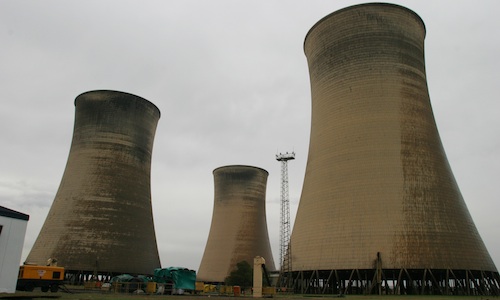
Where will the money come from? This is the key question arising from confusion over cabinet’s decision to “support” — as opposed to authorise — a proposed additional R20bn for power utility Eskom.
Two options have emerged despite the government’s mixed messages. One is to fund it directly from the budget, or, as was initially announced, by “liquidating state holdings in nonstrategic and noncore assets”.
The government does have what could be termed “noncore” state assets worth considerably more than R20bn, though the amount could be substantially more. These include a 13,9% stake in Vodacom, which, based on the company’s market capitalisation, is worth about R15bn. Selling this off would provide 75% of the funds needed for Eskom’s equity injection.
The state also owns a 39,8% stake in Telkom, valued at about R7bn, based on Telkom’s market cap. But the company, though listed, is more than 50% owned by government due to the stake of the Public Investment Corporation and PIC-related entities. As such, any sale would need the buy-in of a number of state actors.
Cash also lurks in the balance sheets of state-owned entities such as the Central Energy Fund (CEF), which has cash and cash equivalents of about R15bn. But that is earmarked for the company’s own strategic plans, including energy exploration.
PetroSA, a wholly-owned subsidiary of the CEF, has more than R10bn in cash on its balance sheet. But it is looking to build a new refinery at the Coega industrial development zone in the Eastern Cape, currently the subject of feasibility studies by the department of energy.
But any money destined for Eskom would be subject to a budgetary process as money from the sale of state assets reverts to the national revenue fund and any allocations from it must be determined in the budget.
‘Ideological opposition’
So, whatever way the government decides to raise the additional funding, Eskom will have to wait until February to get its money. An economist said that the sale of state assets was a viable option but that it would be met with ideological opposition.
“This shows there are very different views within the government on how to go about economic development,” he said. The treasury would not say how the money could be raised or what it might mean for state finances.
But Jabulani Sikhakhane, the treasury’s spokesperson, said: “The government continues to recognise Eskom’s critical role in the economy and the need to maintain energy security. For this reason, it is imperative that Eskom completes its planned build programme, while sustaining a solid investment grade credit rating.”

Public enterprises spokesman Ayanda Shezi said: “How this equity will be raised is the detail that the government, comprised of public enterprises, national treasury and other relevant departments, needs to consult and deliberate on.”
Eskom has previously said that for each year that the Kusile power station is delayed it stands to pay about R14bn in penalties. The company said in a statement to the Mail & Guardian that there were potential contractor claims looming, though it would be negotiating with them in a bid to bring them down. But it would not say how much the claims were currently.
Eskom’s confidence
According to the statement, Eskom was confident that the money would be allocated, although it suggested that, should government retract its decision for any reason, it could continue with its operations.
“The government equity injection is a long-term commitment to strengthen Eskom’s balance sheet. More importantly is that our funding plan assumes we will obtain additional 25% tariff increases in the two years beyond [the second multi-year price determination], which is an important ‘equity’ injection through the retained earnings that will arise,” the statement said.
Economists say that SA could probably afford a budgetary allocation — though they question whether Eskom should be given the money at all. One of them, Mike Schussler, said any additional funding called into question Eskom’s need for further tariff increases as determined by the national energy regulator.
“SA now has higher residential tariffs than those of the US,” he said. “It’s questionable whether it should be given more money on top of the increases.”
He said residential tariffs in the US averaged US$0,12, or about 84c, whereas tariffs in Johannesburg were about 88c.
Besides, Schussler said, the strengthening rand would have made many of Eskom’s purchases more affordable, granting the company considerable savings.
Dennis Dykes, Nedbank’s chief economist, said SA could probably afford a direct budgetary allocation but that would undermine some of the positive gains made in terms of the reduction of the budget deficit from 5,3% to 3,2% in the next three years.
Nevertheless, if the additional funding meant greater security for SA’s energy supply, then it should be allocated. But, he said, the fundamental problem with the local electricity sector remained the dearth of competitors for Eskom. “If the sector had been opened up we’d see more capital and projects entering the country,” said Dykes.
Ideally, the R20bn could have been saved if independent players had been able to enter the system, but “the lack of an adequate regulatory framework has left SA years behind”, he said.
Opposition parties have criticised government’s handling of the matter. Athol Trollip, the DA’s parliamentary leader, in a statement to the national assembly earlier this week said that “cabinet’s vacillation on the source of this additional funding indicates the deep divisions in the executive” and showed little regard for treasury protocols.
“There appears to be complete chaos — a full-blown meltdown in both the administration’s ability to communicate their plans to the public and with the internal coherence of their policymaking,” he said. — Lynley Donnelly, Mail & Guardian
- Visit the Mail & Guardian Online, the smart news source
- Subscribe to our free daily newsletter
- Follow us on Twitter or on Facebook




